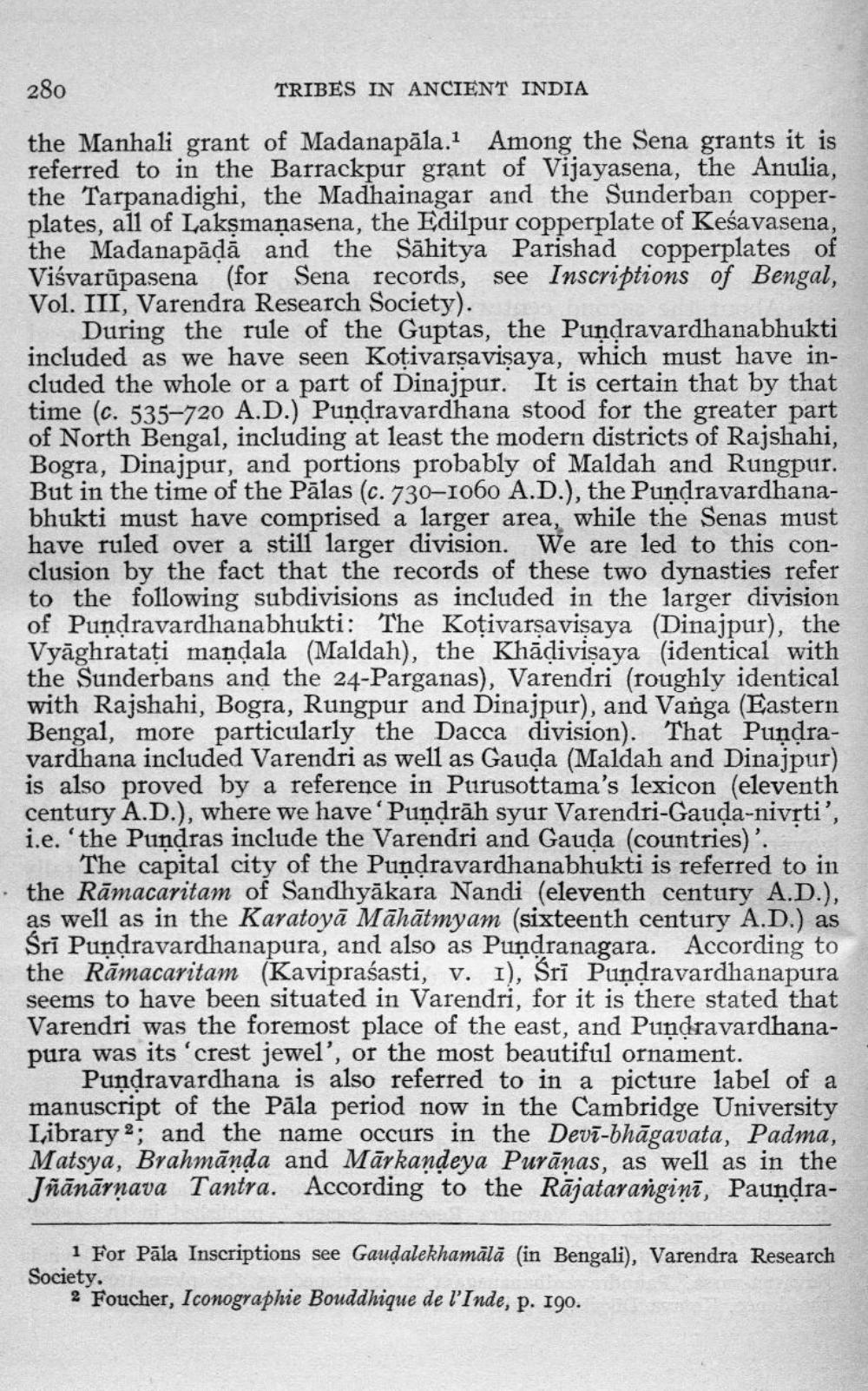________________
280
TRIBES IN ANCIENT INDIA
the Manhali grant of Madanapāla.1 Among the Sena grants it is referred to in the Barrackpur grant of Vijayasena, the Anulia, the Tarpanadighi, the Madhainagar and the Sunderban copperplates, all of Lakşmaņasena, the Edilpur copperplate of Keśavasena, the Madanapādă and the Sāhitya Parishad copperplates of Viśvarūpasena (for Sena records, see Inscriptions of Bengal, Vol. III, Varendra Research Society).
During the rule of the Guptas, the Pundravardhanabhukti included as we have seen Kotivarşavişaya, which must have included the whole or a part of Dinajpur. It is certain that by that time (c. 535-720 A.D.) Pundravardhana stood for the greater part of North Bengal, including at least the modern districts of Rajshahi, Bogra, Dinajpur, and portions probably of Maldah and Rungpur. But in the time of the Pālas (c. 730–1060 A.D.), the Pundravardhanabhukti must have comprised a larger area, while the Senas must have ruled over a still larger division. We are led to this conclusion by the fact that the records of these two dynasties refer to the following subdivisions as included in the larger division of Pundravardhanabhukti: The Koțivarşavisaya (Dinajpur), the Vyāghrataţi mandala (Maldah), the Khādivisaya (identical with the Sunderbans and the 24-Parganas), Varendri (roughly identical with Rajshahi, Bogra, Rungpur and Dinajpur), and Vanga (Eastern Bengal, more particularly the Dacca division). That Pundravardhana included Varendri as well as Gauda (Maldah and Dinajpur) is also proved by a reference in Purusottama's lexicon (eleventh century A.D.), where we have 'Pundrāh syur Varendri-Gauda-nivrti', i.e. 'the Pundras include the Varendri and Gauda (countries)'.
The capital city of the Pundravardhanabhukti is referred to in the Rāmacaritam of Sandhyākara Nandi (eleventh century A.D.), as well as in the Karatoyā Māhātmyam (sixteenth century A.D.) as Śrī Pundravardhanapura, and also as Pundranagara. According to the Rāmacaritam (Kaviprasasti, v. I), Sri Pundravardhanapura seems to have been situated in Varendri, for it is there stated that Varendri was the foremost place of the east, and Pundravardhanapura was its 'crest jewel', or the most beautiful ornament.
Pundravardhana is also referred to in a picture label of a manuscript of the Pāla period now in the Cambridge University Library 2; and the name occurs in the Devī-bhāgavata, Padma, Matsya, Brahmānda and Mārkandeya Purānas, as well as in the Jñānārnava Tantra. According to the Rājataranginī, Paundra
1 For Pāla Inscriptions see Gaudalekhamālā (in Bengali), Varendra Research Society.
2 Foucher, Iconographie Bouddhique de l'Inde, p. 190.




